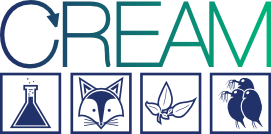Experiments on effects of interspecific competition on population recovery
Ida Dolciotti, Phd project, Helmholtz Centre for Environmental Research – UFZ, Leipzig, Germany
Contact: Enable-Javascript@To-Read-E-mail-Address
What we are doing here is an investigation of recovery of populations of Daphnia magna competing with Culex pipiens larvae after pesticide multiple-exposure.
Despite the large amount of data available on the effects of different substances on the cladocerans Daphnia magna, it is often unclear how the measured effects on the individual level (e.g. survival or growth) express at population level, which is the primary aim of protection. Moreover, the effects of toxicants in laboratory conditions are usually examined on one species of test organisms but the results are far from being realistic because usually, in nature, animals potentially struggle in interspecific or an intraspecific competition. That means that interaction between populations is likely to be of crucial importance to obtain a response to toxicants’ activity.
Since these indirect effects of population interactions are frequently observed in nature, a realistic risk assessment needs to take into consideration these processes to lead to an efficient management and a better protection of species. Intraspecific competition for example can increase the sensitivity of populations or delay the recovery after a pulse exposure and the duration of the recovery process in particular (Liess, 2002; Liess and Foit, inpress).
The experiment we are about to start will include the populations of Daphnia magna and Culex pipiens exposed to several short pulses of a pesticide. The experiment has been preceded by individual tests on the organisms separately in order to get a better understanding of the sensitivity of the two test organisms and the LOEC of the substances.
Then we will test the effects of four different concentrations on Daphnia magna both with and without the presence of the competing species Culex pipiens.
In the test system developed by our department we can maintain and breed for long periods populations of D. magna inside of controlled nanocosms. The populations of D. magna and C. pipiens are monitored every 3 or 4 days by image analysis and endpoints like abundance and biomass, but also size class distibutions, are estimated.
This project is carried out by Ida Dolciotti: “Now I am looking forward to meeting the candidate for Daphnia-2 that will develop and test a corresponding individual-based community model based on my tests. In the meanwhile I am starting to learn a bit about modeling and software for modeling“.
Supervisor: Matthias Liess, Volker Grimm (UFZ)
Co-Supervisor: Udo Hommen (IME)
Associated partners: gaiac; Bayer; BASF; UBA

